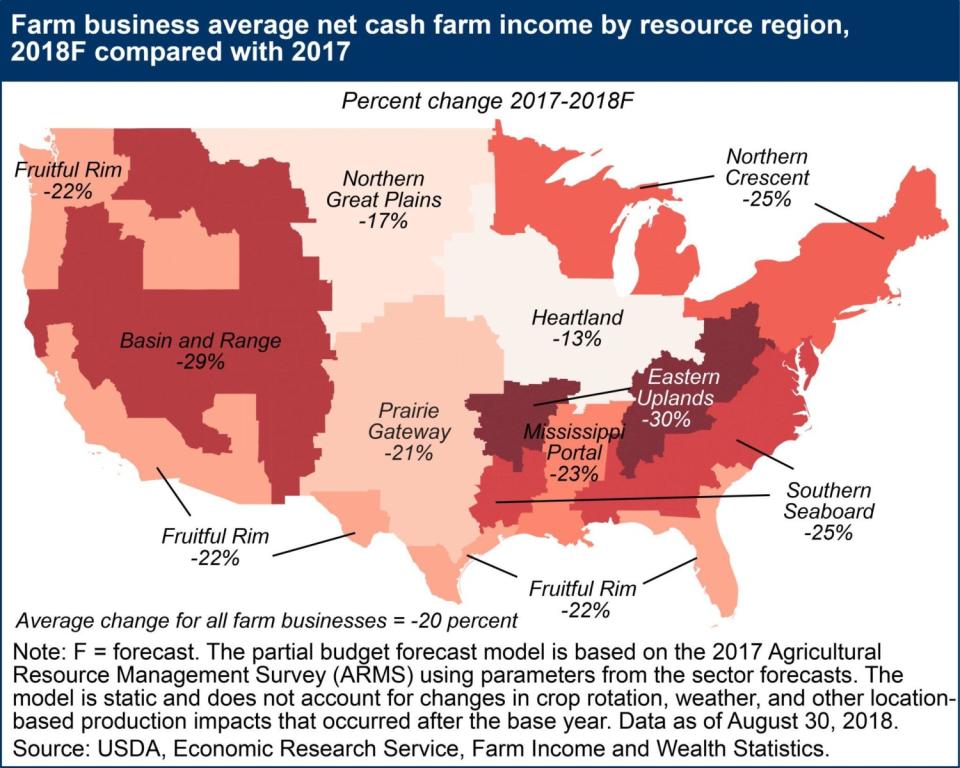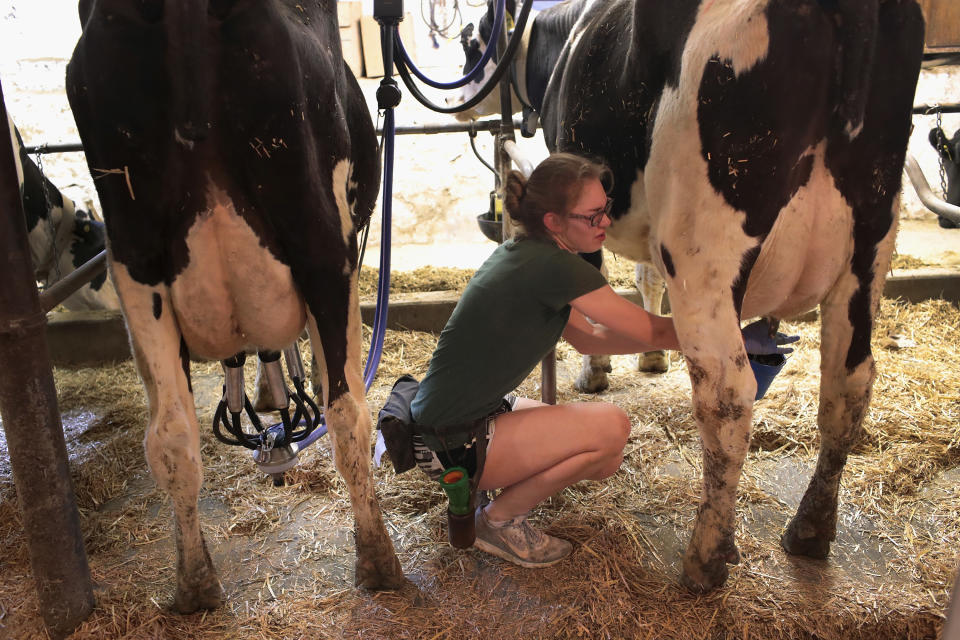Brutal map shows why U.S. farmers want Trump to 'end the trade war'
The ongoing battle over tariffs between President Trump and China is negatively affecting farmers across the US.
The conflict is expected to worsen as Trump instructed his aides on Friday to carry out his tariff plans of $200 billion in Chinese products. Even the cost of Hurricane Florence is made worse by the trade war.
“The trade war is having impacts on all agricultural sectors,” Gary Schnitkey, Professor in Farm Management at the University of Illinois, told Yahoo Finance in a phone interview.
According to a recent map, provided by the US Department of Agriculture’s Economic Research Service and highlighted by the farmdoc project at the University of Illinois, the net cash farm income has decreased in every American region in comparison to 2017.

The main agricultural commodities, Schnitkey explained, are soybeans and pork. To a second degree, there are corn, fruits, and vegetables.
“All of these commodity prices are linked together,” he said. “If soybean prices fall, so do corn and wheat.” Eventually, every kind of farmer experiences a major loss of income.
‘They’re coming out worse’
Each region specializes in its own crops. In the Basin and Range, one of the regions losing the most income, it’s beef and wheat. In the Heartland, soybean and corn prices are falling.
Blake Hurst, a corn and soybean farmer from Missouri, recently told Yahoo Finance that he’s already seen a 15-20% drop on the prices that he receives.
“The only answer is to make progress in negotiations with China since they are the biggest soybean consumers,” he said. “Not more government programs, but to make progress.”
The Northern Crescent mainly consists of dairy. However, Michigan grows lots of fruits and vegetables, while some of Minnesota and Wisconsin has “good corn and soybeans,” according to Schnitkey.

In the Northern Great Plains and the Prairie Gateway, wheat is the main crop, along with corn and soybeans. Schnitkey pointed out, though, that the region is “experiencing drier weather than normal and production issues.”
The crops in the Fruitful Rim consist mainly of fruits, especially citrus, and vegetables. Cotton, soybeans, and corn are in the Mississippi Portal. In the Southern Seaboard, crops such as cotton, peanuts, rice, soybeans, and beef are all being affected.
Hugh Weathers, South Carolina’s commissioner of agriculture, estimates that “the impact of tariffs on our markets to date is at $70 million.” It’s been causing a steady decrease in agricultural income.
Schnitkey describes the crops in the Eastern Uplands as “a mishmash of things.” There are primarily small farms in the region, which used to be big tobacco producers, but less so now. Beef is a big one. The region is among those being hit the hardest, with 30% less income compared to 2017.
With farmers in that region dealing with yields and being further away from markets, “their base is turning out worse, which is why they’re coming out worse,” he said.
‘End the trade war’

China, the biggest soybean consumers, recently placed tariffs on soybeans (25%) and pork. President Trump promised $12 billion in aid to farmers hit by these retaliatory tariffs, and the first payment was distributed on Sept. 4. Soybean farmers were given the most in aid at $3.7 billion, followed by pork producers and cotton farmers.
The second round of aid is expected to be distributed in December, according to the US Department of Agriculture, although it is unclear how the funds will be distributed and how much.
In the meantime, China can get soybeans from other countries. “Brazil and Argentina can have 25% less than us and still beat our price because of the tariff. You’ll see more purchased from there than from us,” Schnitkey said.
So what’s the solution for American farmers?
“End the trade war,” Schnitkey said. “That’s what [farmers] are hoping for … that the tariffs come to an end.”
Follow Adriana on Twitter.
h/t @Ritholtz
READ MORE:

